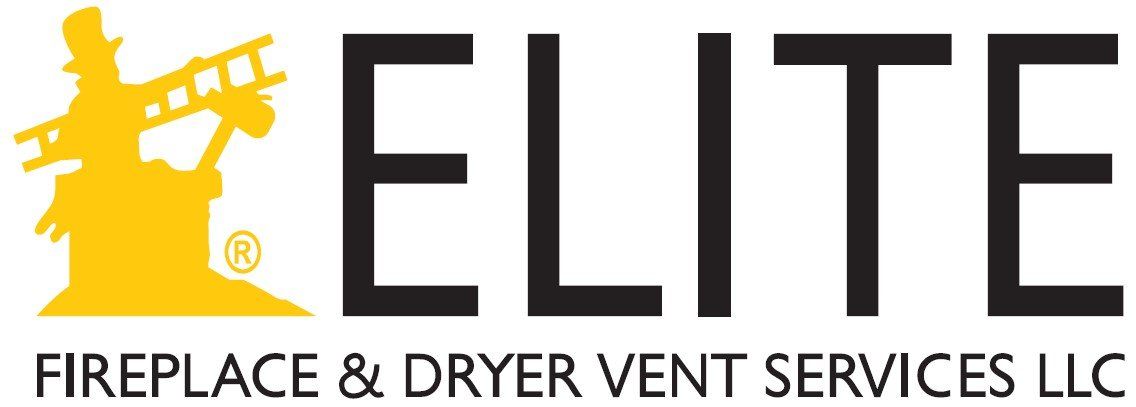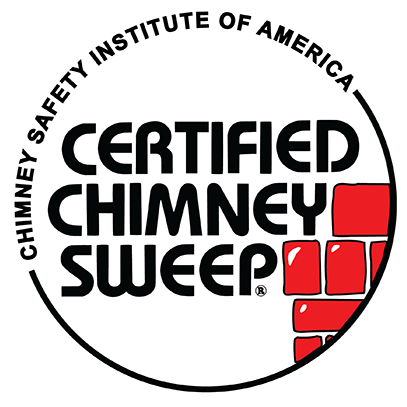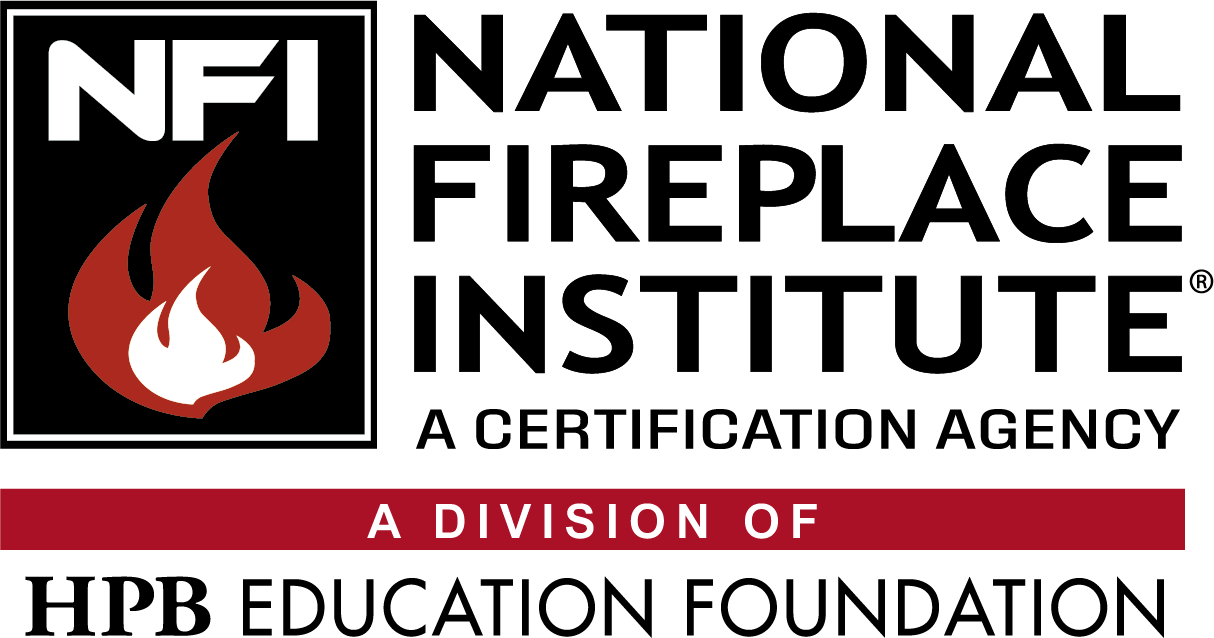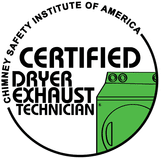Fireplace & Chimney FAQs
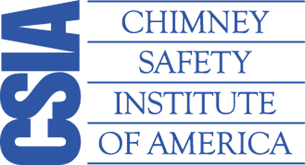
The Chimney Safety Institute of America (CSIA) is a nonprofit organization dedicated to the education, training, and certification of chimney and venting industry-related professionals.
Additionally, we strive to advance public awareness about the dangers of chimney fires and other problems related to the maintenance and performance of chimney and venting systems through consumer education.
Questions about cleaning:
Q: Why is it crucial to hire a licensed professional to clean, inspect & repair your fireplace, chimney & dryer vent exhaust?

Answer:
- Safety – Licensed professionals are trained to identify & mitigate potential hazards.
- Expertise – Licensed professionals have the necessary knowledge & skills, and the latest standards, techniques & best practices.
- Insurance & Liability – Licensed companies are required to carry appropriate insurance, protecting homeowners in case of accidents or damage during the service.
- Codes & Regulations Compliance – Licensed professionals are aware of and comply with local, state & national safety codes and regulations, ensuring the work meets required safety standards.
- Quality Assurance – Licensing involves rigorous testing & ongoing education, ensuring licensed companies maintain high standards of service & professionalism.
- Peace of Mind - Licensed professional service gives you confidence in the quality and safety of the work being performed and provides an additional layer of trust & reliability.
Q: How often should I have my chimney swept?

Answer: This is a tougher question to answer than you'd think but here's the simple answer: Here at Elite, we follow the guidelines of The National Fire Protection Association (NFPA) Standard 211, which says, “Chimneys, fireplaces, and vents shall be inspected at least once a year for soundness, freedom from deposits, and correct clearances. Cleaning, maintenance, and repairs shall be done if necessary.”
Whoa – does this apply to ALL chimneys, fireplaces, and vents? Why every year?
This is the national safety standard, and it takes into account the fact that – even if you don’t use your chimney much – animals may build nests in the flue or there may be other types of deterioration that could make the chimney unsafe.
How will a sweep know when it’s time to sweep your chimney? We recommend that all masonry fireplaces be swept at 1/8” of sooty buildup, and sooner if there is any glaze (creosote) present in the system. This is considered by fire safety experts to be enough buildup to cause a chimney fire capable of damaging the chimney or spreading to the home.
Factory-built fireplaces should be swept when any appreciable buildup occurs. The logic here is that the deposit is quite acidic and can shorten the life of the fireplace by corroding the different components of the prefab system.
Q: I heat with gas. Should this chimney be checked too?
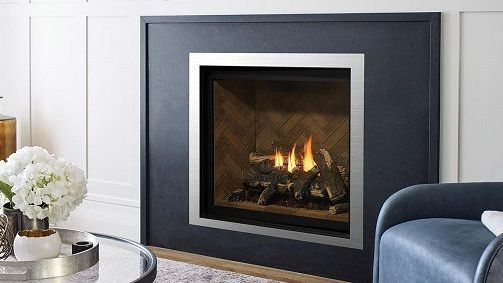
Answer: Without a doubt! Although gas is generally a clean-burning fuel, the chimney can become non-functional from bird nests or other debris blocking the flue. Modern furnaces can also have many problems when they’re vented through average flues intended for older furnaces. So, it’s important that you schedule annual inspections for all your chimneys – gas furnaces included.
Q: How do I know if the chimney sweep really cleaned my chimney?
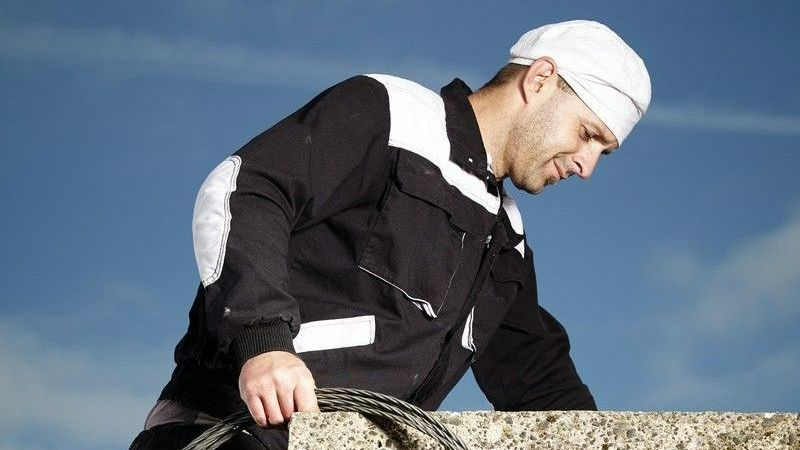
In the past, sweeps we’ve hired have always gone on the roof, checked the flashing, the mortar, and all the workings of the chimney, and then cleaned the chimney from the top of the house. Today, this sweep came in, looked into my fireplace from the bottom, and said we don’t need it cleaned because he can still see the bricks. I asked to have it cleaned anyway. He then grabbed a wire brush and simply rubbed away any buildup from the main opening to the fireplace, without even going up into the chimney to clean anything. Am I way off base, or did the sweep charge me without cleaning my chimney?
Answer: It sounds like the chimney sweeps you had experiences with in the past did the job they were hired to do. However, your most recent experience sounds a bit odd. If the sweep agreed to do a complete sweeping and only cleaned the brick in the fireplace’s firebox, you did not get the service that you paid for. A complete chimney sweeping includes the chimney flue and smoke chamber.
In the future, you could ask for a Level 1 chimney inspection and a chimney sweeping. If the sweep doesn’t know what a Level 1 chimney inspection is, find one that does. A Level 1 inspection is detailed in the National Fire Protection Association (NFPA) 211: Standard on Chimneys, Fireplaces, Vents, and Solid Fuel-Burning Appliances.it is the proper course of action in a case like mine.
Q: What is level 3 creosote?
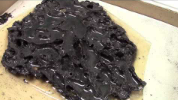 Watch a video
Watch a videoAnswer: Creosote is a flammable deposit that’s a natural byproduct of wood-burning and oil-burning. Level 3 creosote is the glazed type that can’t be removed with mechanical sweeping alone. Watch the video below to see what creosote looks like.
Q: How do you get rid of creosote?

I have an 80-year-old home that was a longtime rental house. I have lived here five years and have been using the fireplace for four of those years. I do not know how long it has been since my chimney was swept (potentially decades, if ever). I just had a chimney sweep at my house, and he informed me that the creosote in my chimney was quite thick (he used the term ‘level 3’ creosote). He also said that in the smoke chamber, the brick is stepped (instead of smooth), and that there is a lot of dangerous buildup in there. He recommended two applications of an acid cleaning (which he said are not entirely foolproof and work better above 45 degrees F), and that we use a chemical when we burn our fire to help ‘chalkify’ the creosote buildup. He showed me the buildup inside with a light and everything he said seemed to make sense. Does this sound like it’s on the up and up? I can’t find any info on this acid cleaning, and I would like to know if this sounds like it is the proper course of action in a case like mine.
Answer: What you have described sounds pretty typical. In addition to the chemical treatment that you mentioned, professional-grade chemicals, usually in the form of powder, can be applied by chimney sweeps to help change the nature of the glazed creosote to a form that can be removed by a professional with a brush. Both forms of these products require some heat, such as you would have with a small fire in the fireplace.
If the creosote is gummy, about the only way to deal with the creosote is with a chemical treatment or an acid application. Acid applications are not as commonly used since they are harder to apply and must be neutralized a few days after application. If the creosote is crusty or fractures when hit, a rotary cleaning can be helpful for removal.
Q: Can fireplace cleaning logs thoroughly clean my fireplace & chimney?

Answer:
When burned in your wood-burning fireplace, the chemical mix releases and works to change the structure of creosote, turning it from a tar-like substance to a dry, flakey one. Therefore, fireplace cleaning logs don't necessarily get rid of creosote, but they can make it easier for a professional to remove it. Fireplace cleaning logs are not a substitute for a thorough cleaning done by a certified professional fireplace & chimney services company.
Q: Does burning aluminum cans clean your fireplace & chimney?
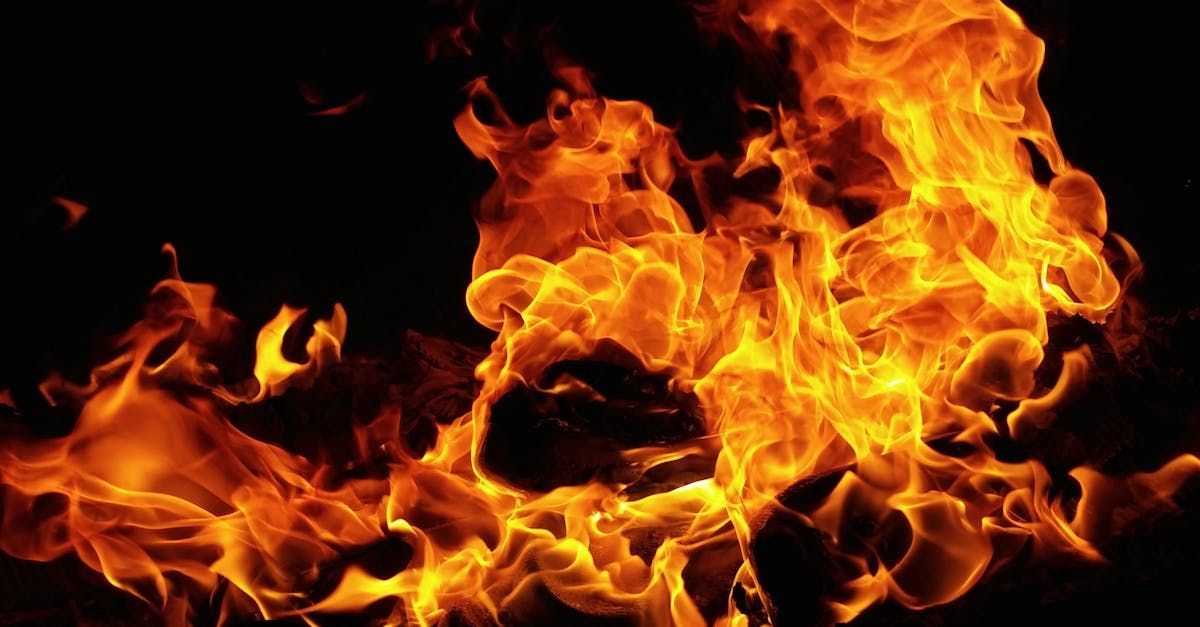
Answer: Heating aluminum cans causes an increase in heat in a chimney which can help prevent creosote from building up on a clean chimney. However, aluminum oxides are very stable and do not react to high temperature. This means that there will not be much of an impact on built-up creosote. Nothing takes the place of a thorough cleaning done by a certified professional fireplace & chimney services company.
Q: What is your position on chemical chimney cleaners?
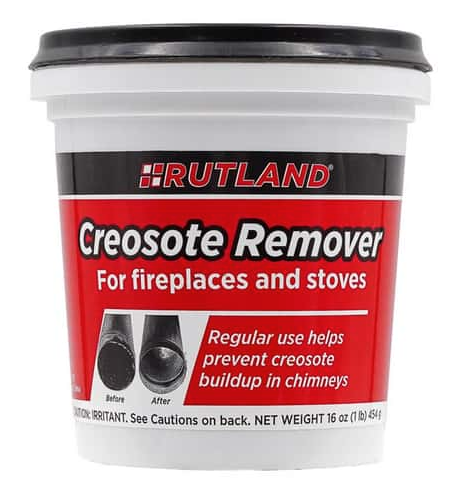
Answer: While we don’t believe these chemical chimney cleaning products are bad in and of themselves, what is bad is using them in place of professional chimney inspections and cleanings.
Here’s why: These products are often promoted for their ability to remove a portion of the creosote from a masonry or metal chimney interior through catalytic action when burned in a fireplace or wood stove. But the use of these products alone is not an adequate substitute for mechanical chimney cleaning and inspection, nor does it provide the same level of protection to the chimney system.
Current promotional claims for some of these products may be creating a false sense of security among consumers, and that’s what concerns us.
Chemical products that claim to clean or assist in chimney cleaning are not new. In fact, some of these chemical products are used by professional chimney sweeps in conjunction with the mechanical cleaning of a chimney.
For example, a chimney can develop a hard or tacky layer of flammable creosote that cannot be removed by normal mechanical brushing. In these situations, a qualified chimney professional may use certain chemical cleaners to change the chemical composition of the hard or tacky layer of creosote so it can be removed. But these chemical cleaners would never be considered adequate on their own.
Mechanical sweeping of a chimney not only removes layers of creosote from the flue surface, but it also removes the resulting loose soot and creosote from the chimney, fireplace, or wood stove.
Think about it: A substantial percentage of fireplace and wood stove chimneys do not provide a straight path from the firebox to the outside. If chemical chimney cleaning products perform as claimed and cause debris in the chimney to fall off, that debris still needs to be removed from the smoke shelf, the baffle, the catalytic combustor, or the offset to ensure a properly functioning chimney.
That’s why we believe that the optimal method for cleaning a chimney is by a mechanical brushing of the chimney in conjunction with a complete evaluation of the system – all done by a qualified chimney professional. And we (along with the National Fire Protection Association) recommend annual chimney inspections for good reason…
Chimney inspections often reveal hidden problems with a chimney structure that could be potentially hazardous. If you’re only using chemical cleaners and not keeping up with routine chimney inspections, you won’t know about those hidden problems until they reveal themselves, putting you and your family in danger.
So, the bottom line is this: If you’re going to use chemical cleaning products, remember to also schedule your annual chimney inspection and have your chimney system professionally cleaned as needed.
Questions about issues & use:
Q: What can I burn in my fireplace?
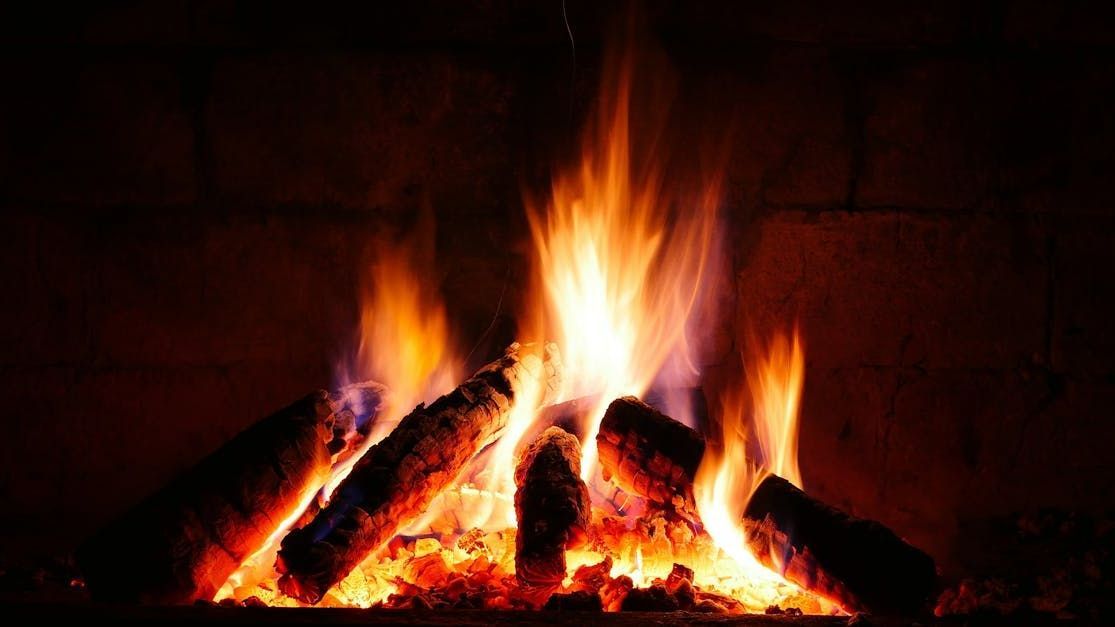 Watch the video
Watch the videoAnswer: Only well-seasoned wood. Nothing else should be burned in your fireplace. Why not? Watch the video below to see what happens when you burn holiday wrapping paper, a pizza box, and foam packaging in the fireplace.
Q: My fireplace smells badly, especially in the summer. What can I do?

Answer: The smell you’re catching whiffs of is from creosote deposits (a natural byproduct of woodburning) in the chimney. The odor is usually worse in the summer when the humidity is high and the air conditioner is turned on – call it the perfect storm for bringing out the aroma.
So, how do you get rid of the smell?
A good chimney sweeping will help, but it won’t usually solve the problem completely. There are commercial chimney deodorants that work pretty well, and many people have good results putting baking soda or even kitty litter in the fireplace to absorb the odor.
The real problem is the air being drawn down the chimney – a symptom of overall pressure problems in the house. Some make-up air should be introduced somewhere else in the house to prevent air from being drawn down the chimney. A tight sealing top-mounted damper can also reduce airflow coming down the chimney, thus reducing issues with odor.
Q: When I build a fire in my upstairs fireplace, I get smoke from the basement fireplace. What’s going on?
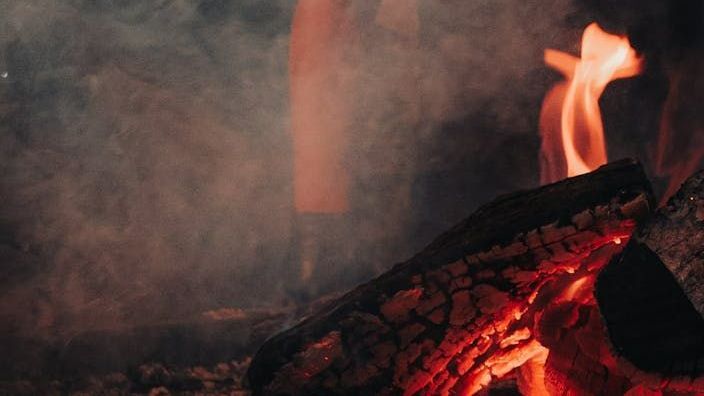
Answer: This has become quite a common problem in today’s airtight houses, where weatherproofing has sealed up the usual air infiltration routes.
So, what’s happening?
The fireplace in use exhausts household air until a negative pressure situation exists. If the house is fairly tight, the simplest route for make-up air to enter the home is often through the unused fireplace chimney. As air is drawn down this unused flue, it picks up smoke that is exiting the fireplace in use and brings that smoke down into the living area.
The best solution is to provide make-up air to the house so that the negative pressure problem no longer exists – thus eliminating not only the smoke problem, but also the potential for carbon monoxide to be drawn back down the furnace chimney.
A secondary solution is to install a top-mount damper on the fireplace that is used the least and keep it closed.
Q: Is there is a greater risk of chimney & house fires around the 4th of July due to fireworks?

Answer: Yes, sparks & embers from fireworks can enter chimneys and ignite creosote deposits or other flammable materials inside. Also, debris from spent fireworks, casings & ash can fall into chimneys causing blockages that affect proper ventilation & increase the risk of carbon monoxide buildup. Fireworks can ignite roofing materials, leaves or other debris around the chimney leading to house fires.Powerful fireworks can cause physical damage to a chimney’s structure leading to cracks or other damage that may not be immediately noticeable. These cracks allow fire to come in contact with the wall outside the firebox resulting in house fires. Take precautions: Have your chimney inspected to insure it’s clean & free of flammable deposits and your roof is clear of leaves & other debris around the chimney. Use a chimney cap to prevent debris from entering.
Questions about parts:
Q: I’m unsure how to work my damper. Can you show me how?
 Watch the video
Watch the videoAnswer: This is a common question. The damper is a hinged metal plate or valve used to seal the fireplace when it’s not in use, and it’s important to understand how to work your damper. Here’s why: If the damper is not functioning correctly or if it’s closed when you light a fire in your fireplace, you could have a smoky room at best and a fire hazard at worst.
You want the damper to be in the fully open position before you light your fire, for safety reasons. If you wait until you’ve lit a fire in your fireplace to check that the damper is open, it’ll be much more difficult to safely open the damper. So, always look up into your fireplace with a flashlight to check that the damper is open first. Once you’ve confirmed it’s open, then you can light your fire.
For a quick tutorial on how to open and close your damper, no matter the type, watch the video below.
Q: How common is it that chimney liners cannot be seen from inside the fireplace with only a flashlight? Is there some standard building requirement for the flue and the fireplace that makes it so you can’t just look up from the fireplace and see the sky or chimney cap at the top of the chimney?
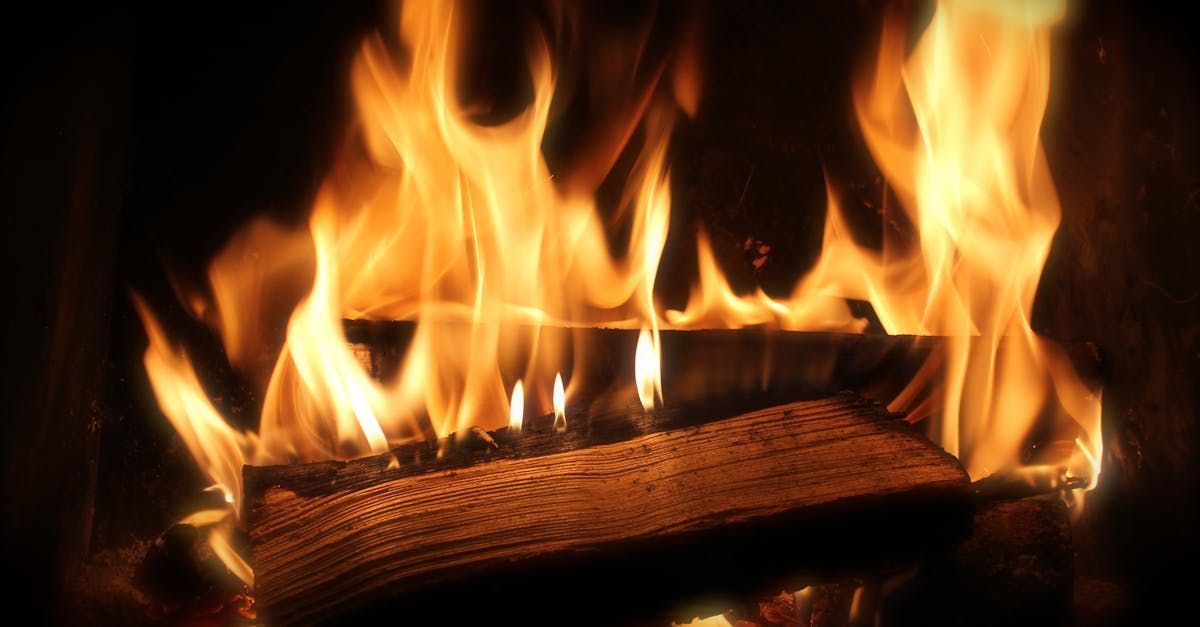
Answer: Flues are allowed to have offsets of up to 30-degree. In most cases, this will make a direct visual observation of the flue impossible. A video scan would be required to evaluate the flue condition in a situation like this. The height of the chimney flue is not a factor. Even in short flues, there’s a big difference in what can be observed during a visual inspection vs. during a video inspection.base, or did the sweep charge me without cleaning my chimney?
It sounds like the chimney sweeps you had experiences with in the past did the job they were hired to do. However, your most recent experience sounds a bit odd. If the sweep agreed to do a complete sweeping and only cleaned the brick in the fireplace’s firebox, you did not get the service that you paid for. A complete chimney sweeping includes the chimney flue and smoke chamber.
In the future, you could ask for a Level 1 chimney inspection and a chimney sweeping. If the sweep doesn’t know what a Level 1 chimney inspection is, find one that does. A Level 1 inspection is detailed in the National Fire Protection Association (NFPA) 211: Standard on Chimneys, Fireplaces, Vents, and Solid Fuel-Burning Appliances.it is the proper course of action in a case like mine.
Q: What stainless steel liners require insulation?

Answer: Liners for gas- and oil-fired appliances do not require insulation to meet the manufacturers’ installation and warranty requirements. Why not? Because of the lower flue gas temperatures and lower heat transfer, they are less likely to catch surrounding combustible materials on fire.
Liners used with solid fuel-burning appliances, however, do need to be insulated. If combustible materials are in contact with the chimney, there are provisions that allow the liner to be installed in what is defined as a zero/zero install. That means there may be zero clearance to the interior of the chimney and zero clearance to the exterior of the chimney. The insulation may be of the blanket type or an expanded mica or masonry insulation.
There are some manufacturers that will list a liner for use without insulation if it conforms to the NFPA 211 construction requirements. The problem is that it’s almost impossible to determine if those requirements are met without destroying the chimney. Thus, it makes much more sense to insulate every liner serving a wood-burning appliance. Even gas- and oil-fired appliances that are vented into an exterior chimney will benefit (performance-wise) from liner insulation.
Q: What’s your position on aftermarket parts? Are they safe?
 Read the paper
Read the paperAnswer: It’s not uncommon for listed fireplaces, inserts, and chimneys to be refitted with aftermarket parts, not necessarily in accordance with the original listing. While we can’t be certain of the impacts of aftermarket parts, we’ve put together a white paper on some considerations and possible impacts. You can read that white paper for free right here.

